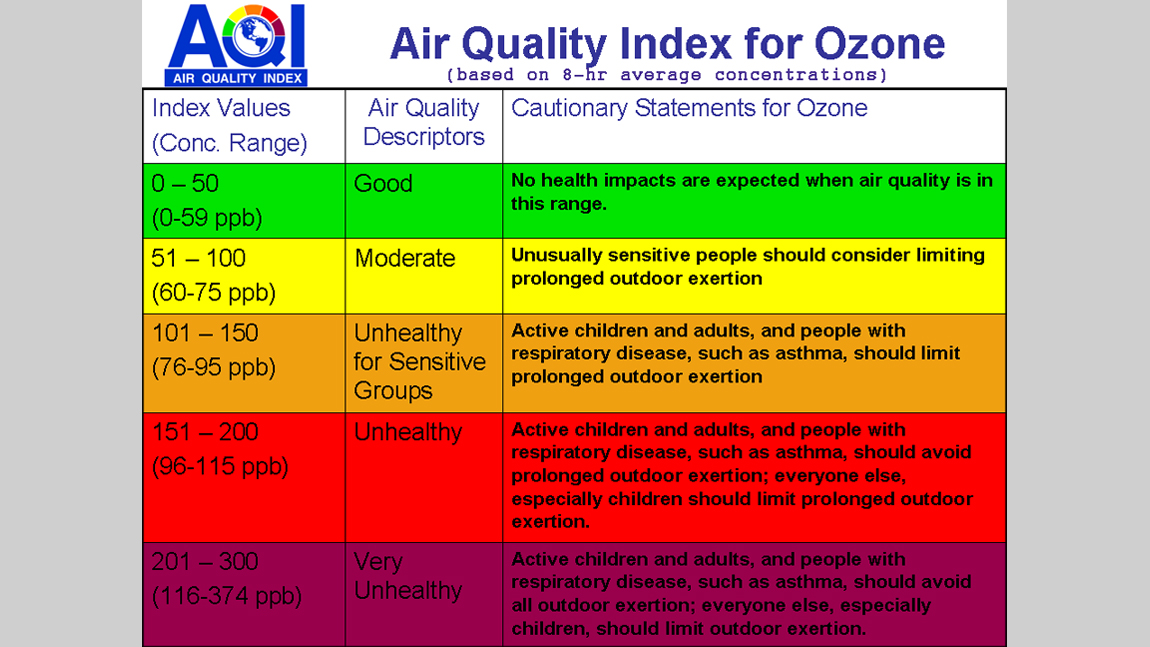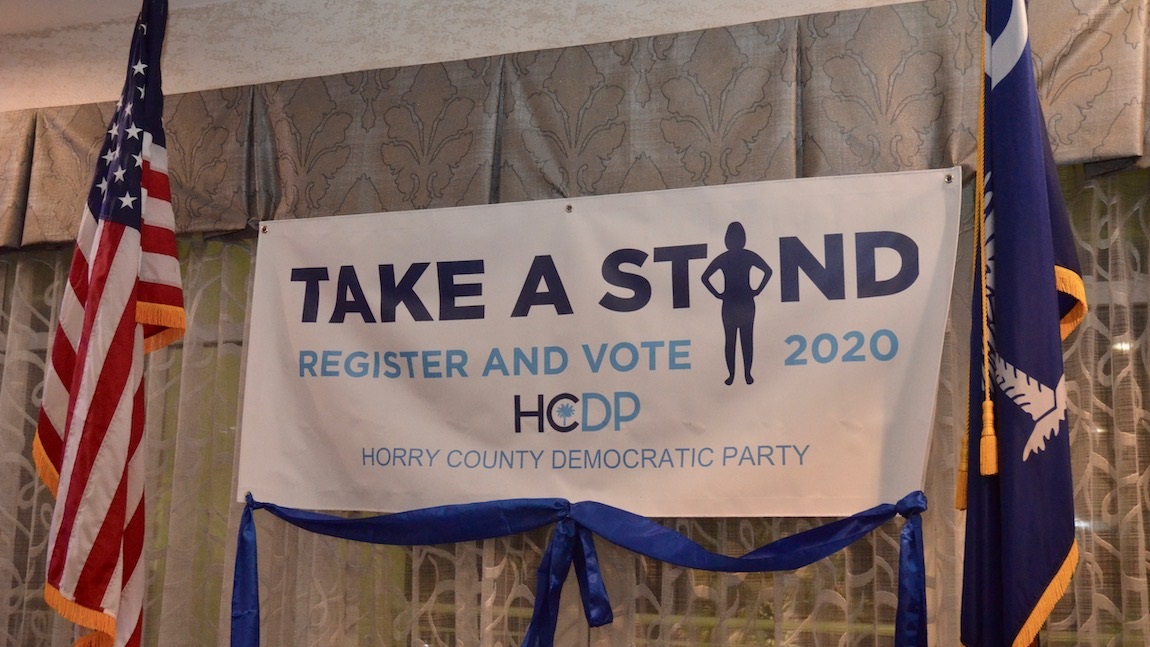By Susan Hutchinson
The United States Clean Air Act was signed into law by President Lyndon Johnson on December 15, 1963. The act had its origins in the Air Pollution Control Act of 1955. In the 56 years since the act became law, we have seen gradual improvement in national air quality, especially since 1990; however, quite a few states continue to struggle with clean air. And the Trump administration is not doing them any favors with their current policies regarding ozone or the overall environment.
There are 2 types of ozone. The “good” ozone is a protective layer in the upper atmosphere and, in the 1970’s, caused serious concern due to the formation of a hole, which was caused by man-made chemicals. Although this hole is now closing, due to regulations implemented by the Environmental Protection Agency (EPA), ground level “bad” ozone levels continue to cause issues with air quality. Ground level ozone is created when a combination of airborne pollutants chemically reacts with sunlight. These pollutants are generated by cars, power plants, refineries and other chemical plants. Ozone levels increase in summer due to the longer and hotter days. The Air Quality Index (AQI) is measured daily across the country with advisories issued based on an AQI range between 0-500. The EPA site allows you to look at current data based on city and state.
Consequences of Ground Level Ozone
Ground level ozone not only affects those who already have respiratory problems, it also compromises lung function for healthy people, making it difficult to breathe as deeply as they normally would. Continued or prolonged exposure can cause lung cells to be inflamed and may result in scarring of the lungs.
Humans are not the only ones affected by poor air quality. High levels of ozone in the air also damage vegetation and ecosystems. As a result, an estimated $500 million in reduced crop production happens every year in the United States.
Even though the EPA has guidelines to try to manage ozone levels at the national level, they also recommend that everyone take personal actions to help reduce the emissions contributing to ground level ozone. These include driving less (carpool, limit unnecessary trips or combine trips), maintain your vehicle, walk or ride a bike for short trips, avoid driving in peak hours, take public transportation and save electricity. Taking personal responsibility, however, does not negate the need for overall changes to prevent or significantly reduce the causes of ground level ozone in the first place.
State Implementation Plans
Every state is required to submit plans to the EPA for implementation, maintenance and enforcement of the National Ambient Air Quality Standards (NAAQS). A revised State Implementation Plan (SIP) is submitted every 3 years based on new NAAQS guidelines. Each state designates areas as attainment or nonattainment of air quality standards. There must be a SIP to address all nonattainment areas. In the state of South Carolina, there was only one area identified – the York County part of the Charlotte-Gastonia-Rock Hill NC-SC area for 2008 ozone NAAQS. A Marginal Nonattainment Area SIP was submitted in 2014. In 2015 a request was made to re-designate this area as attainment. Theoretically the state of South Carolina currently meets all guidelines and has no areas requiring additional actions.
This doesn’t mean we should stop being concerned about elevated ground level ozone.
States may do all that is required by the EPA, but, as we all know, there are no barriers between states to prevent drifting of ozone and other airborne pollutants coming from states with high AQI’s. In December 2017 eight northeastern states filed suit against the EPA so they would impose more restrictive guidelines on states whose air pollution blows over their borders. What escalated the issue to a lawsuit that began during the Obama administration?
Donald J. Trump and his prioritizing of profits over everything else.
The Trump administration relaxed smog pollution controls thus allowing unhealthy smog to pour over the borders from 9 other states. The lawsuit requested the EPA overturn the decision to not add these 9 states to the Ozone Transport Region. These northeast states, as well as others along the mid-Atlantic, continue to maintain that the emissions from coal plants in the Midwest are carried eastward by air currents.
Making American Air More Polluted Again
As we all know, Donald Trump is all about repealing anything Barack Obama implemented during his 8 years in office. So it came as a surprise when in August 2018 it was announced the EPA would stand by the 2015 rule that tightened the ground level ozone requirements. The EPA administrator at the time, Scott Pruitt, was firmly against the Obama era regulations. So why did Pruitt and Trump drop repeal? It took several lawsuits to reverse this particular campaign promise to roll back air quality regulations.
Lawsuits don’t stop Trump and his enablers in Congress from continuing their war on the environment. They are eliminating science based standards in EPA reviews by replacing scientists on review panels with industry consultants. And in 2017, a bill was introduced by Rep Matt Gaetz (R-FL-1) to eliminate the EPA completely. H.R.861 now sits in subcommittee with no further actions as the House is now controlled by Democrats.
As for eliminating or reducing the source of ground level ozone, let’s look at the Trump administration’s actions with regard to emissions and alternative energy. Trump is now attempting to weaken the restrictions on vehicle pollution. This will result in a “split-market” for auto makers as some states, like California, have stricter regulations on vehicle emissions now compared to other states. Automakers originally asked Trump to loosen the pollution rules and are now asking him to implement a national (lower) standard with which all states must comply. This requires Trump’s administration to negotiate with California. Negotiations, of course, have stopped because California is controlled by Democratic Governor Gavin Newsom, a man who takes air pollution and climate change very seriously.
This week Trump announced new taxes for Americans in the form of tariffs on solar equipment produced overseas. In addition to rolling back regulations to make industries more profitable, he continues his war on renewable energy sources by making them more costly to average consumers. This comes on top of his claims that wind turbines cause cancer and kill birds.
We desperately need a President that will embrace new ideas and aggressively go after the issue of climate change and air quality to reverse the damage to humans and ecosystems before there is no turning back. Let’s all hope that one day we will be able to stop tracking the AQI across America and we can all breathe clean air again.
Take a Stand and Vote for the Environment in 2020!






